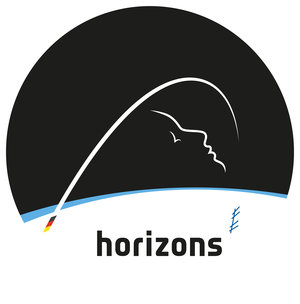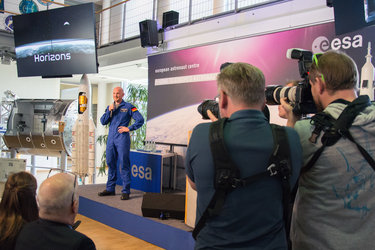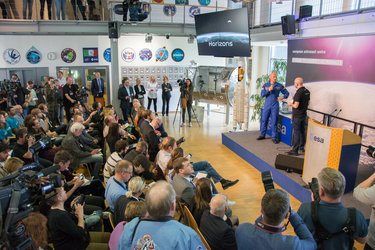Accept all cookies Accept only essential cookies See our Cookie Notice

About ESA
The European Space Agency (ESA) is Europe’s gateway to space. Its mission is to shape the development of Europe’s space capability and ensure that investment in space continues to deliver benefits to the citizens of Europe and the world.
Highlights
ESA - United space in Europe
This is ESA ESA facts Member States & Cooperating States Funding Director General Top management For Member State Delegations European vision European Space Policy ESA & EU Responsibility & Sustainability Annual Report Calendar of meetings Corporate newsEstablishments & sites
ESA Headquarters ESA ESTEC ESA ESOC ESA ESRIN ESA EAC ESA ESAC Europe's Spaceport ESA ESEC ESA ECSAT Brussels Office Washington OfficeWorking with ESA
Business with ESA ESA Commercialisation Gateway Law at ESA Careers Cyber resilience at ESA IT at ESA Newsroom Partnerships Merchandising Licence Education Open Space Innovation Platform Integrity and Reporting Administrative Tribunal Health and SafetyMore about ESA
History ESA Historical Archives Exhibitions Publications Art & Culture ESA Merchandise Kids Diversity ESA Brand Centre ESA ChampionsLatest
Space in Member States
Find out more about space activities in our 23 Member States, and understand how ESA works together with their national agencies, institutions and organisations.
Science & Exploration
Exploring our Solar System and unlocking the secrets of the Universe
Go to topicAstronauts
Missions
Juice Euclid Webb Solar Orbiter BepiColombo Gaia ExoMars Cheops Exoplanet missions More missionsActivities
International Space Station Orion service module Gateway Concordia Caves & Pangaea BenefitsLatest
Space Safety
Protecting life and infrastructure on Earth and in orbit
Go to topicAsteroids
Asteroids and Planetary Defence Asteroid danger explained Flyeye telescope: asteroid detection Hera mission: asteroid deflection Near-Earth Object Coordination CentreSpace junk
About space debris Space debris by the numbers Space Environment Report In space refuelling, refurbishing and removingSafety from space
Clean Space ecodesign Zero Debris Technologies Space for Earth Supporting Sustainable DevelopmentLatest
Applications
Using space to benefit citizens and meet future challenges on Earth
Go to topicObserving the Earth
Observing the Earth Future EO Copernicus Meteorology Space for our climate Satellite missionsCommercialisation
ESA Commercialisation Gateway Open Space Innovation Platform Business Incubation ESA Space SolutionsLatest
Enabling & Support
Making space accessible and developing the technologies for the future
Go to topicBuilding missions
Space Engineering and Technology Test centre Laboratories Concurrent Design Facility Preparing for the future Shaping the Future Discovery and Preparation Advanced Concepts TeamSpace transportation
Space Transportation Ariane Vega Space Rider Future space transportation Boost! Europe's Spaceport Launches from Europe's Spaceport from 2012Latest

Soyuz MS-09, Horizons mission patch, 2018
Thank you for liking
You have already liked this page, you can only like it once!
ESA astronaut Alexander Gerst (DE) is assigned to fly on the Soyuz MS-09 spacecraft to the International Space Station, scheduled for launch in June 2018. His crew mates will be NASA astronaut Serena Auñón-Chancellor and Russian spacecraft commander Sergei Prokopyev.
His mission is called 'horizons' and the logo was designed to be timeless, using the concept of the 'golden section', a mathematical ratio of 1:1.618, which has been used for centuries in art, architecture and music as well philosophically linked to the beauty of nature. In the logo, the basic grid and colours are based on the ratio of this golden section, as well as the positioning of individual logo elements. Thus, the horizon lies in the golden section of the circular surface height and the word mark with its baseline again on the minor part of the horizon. The colours and the parabola of the trajectory were determined by a sequence of numbers with (rounded) distances in the ratio 1:1.618. Other elements show a face gazing into space over the horizon with a blue band, which symbolises Earth's atmosphere but also Alexander's first mission, Blue Dot. The face's eye could also be a bird flying across an ocean, and the stylised International Space Station to the right of the mission name represents a four-masted sailing ship from the early days of sea exploration. The new mission goes beyond Blue Dot and extends into infinity symbolised by the white arc, with the Alexander's national flag colours subtly integrated at the left.
The patch was designed by Prof. Christian K. Pfestorf and Michael Hartmann of Steinbeis design consultants, Rhein Main International Institute for Advanced Design Strategies.
-
CREDIT
ESA/Steinbeis Beratungszentrum/Hochschule Darmstadt -
LICENCE
CC BY-SA 3.0 IGO or ESA Standard Licence
(content can be used under either licence)

Horizons logo

Presentation of Alexander Gerst's 'Horizons' mission

Horizons news conference

Horizons media day















 Germany
Germany
 Austria
Austria
 Belgium
Belgium
 Denmark
Denmark
 Spain
Spain
 Estonia
Estonia
 Finland
Finland
 France
France
 Greece
Greece
 Hungary
Hungary
 Ireland
Ireland
 Italy
Italy
 Luxembourg
Luxembourg
 Norway
Norway
 The Netherlands
The Netherlands
 Poland
Poland
 Portugal
Portugal
 Czechia
Czechia
 Romania
Romania
 United Kingdom
United Kingdom
 Slovenia
Slovenia
 Sweden
Sweden
 Switzerland
Switzerland
























